ELI 2013 Analytics: Learning From Our Connections
In this post I am using Twitter analytics to learn about the major themes, discussions, and resources which emerged at the Educause Learning Initiative Annual Meeting held in Denver, CO, Feb. 4-6, 2013.
First of all, I did not attend ELI 2013. I was on the sidelines, watching from afar as the presentations happened, the conversations were had, and folks were discussing the state of teaching and learning today.
I feel privileged to have technology today, such as the Internet and Twitter, to be able to “listen” in from the outside as people become inspired to share publicly online. I did this primarily by following the hashtag #eli2013 on my computer as I sat in my office in Upstate NY as the conference unfolded. As I monitored the “real-time” Internet I caught glimpses of what was going on in the moments I sat and paid attention to it.
This blog summary is to force myself to try to grasp the major themes and resources using some analytics generated for free using the tool TweetArchivist, and to think and reflect on these findings.
MOOCS are here
First of all, it is fairly clear that the MOOCs (Massive Open Online Courses) were the main theme of the online conversation. Out of 25 top words gleaned from Tweets in the final days of #ELI2013, 4 of the words were MOOC-related. One of the curious terms I was interested in is “MOOCMAP.” Upon further exploration, this was a session at ELI which was titled “Roadmap to Launching A MOOC, Collaborating Across Units, Rethinking Faculty and Technology Services.” This session was put on by Cassandra Volpe Horii and Leslie Maxfield.
Andy Salterelli shared a nice blog post on key points to consider when launching MOOCs.
Rounding out the top 10 were some other key trends. Learning was by far the most used word, and rightly so (it’s also in the conference title). Yet, in the context of MOOC’s, learning is more student driven and self-directed, possibly signaling a shift toward personal responsibility for one’s own learning. Students and faculty are also included in the top 10.
Online, Mobile, and Badges were other topics of conversation. Online learning is still an active trend, as is mobile, and they have been for years. The badge conversation, in my view, is a relatively new one. Let’s explore that.
Experimenting With Badges
In doing some research, it seems that the conference was actively experimenting with badges for this conference. Here’s the “7 things you should know about” on badges”. I see this as a very proactive move on behalf of the ELI conference committee to build awareness of badges by using them at their conference. I had not heard of credly before this conference, the service used to manage the badges. The badge conversation in higher ed should be one to watch this year. There must be a potential NITLE prediction market question about badges we can come up with to track these developments.
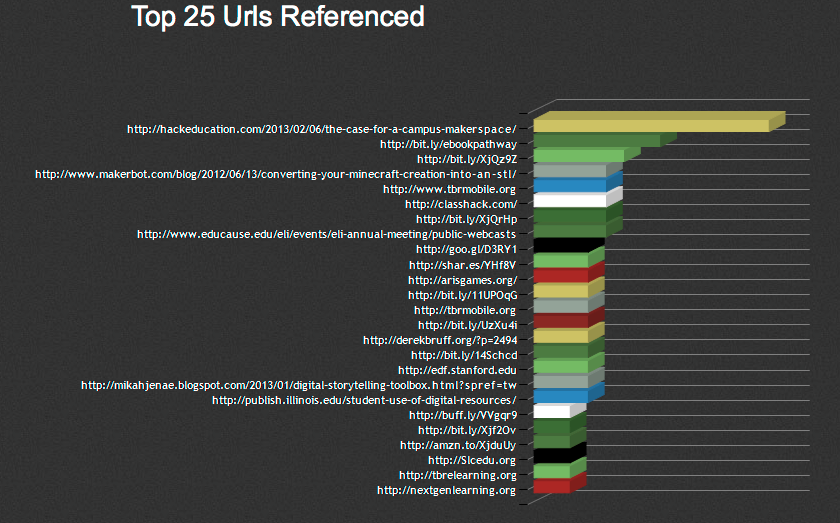
Next we can look at some of the top URL’s referenced at ELI. I personally find it fascinating to see the two “maker” community referenced links. Maker, to me, is a shift back to creating physical things, using our hands, tools, and technology. This certainly bucks the powerful online MOOC trend at the conference. I’ve been aware of Makerfaire for a couple years, but I had never seen a clear connection to higher ed. Does this movement have legs in higher education?
What does Maker mean in the context of technology and learning? To me, the eloquent Audrey Watters may have been taking a contrarian off-line stance as a reaction to online MOOC fever. I can see a profound back-to-basics interest in college students these days, with interests in farming, sustainability, building, and this is right in line with the Maker movement. Perhaps we are witnessing the beginning of a paradigm shift toward pragmatism in higher ed, and John Dewey would likely approve of the Maker movement being brought into this conversation. Or, perhaps, the Maker movement is right in line with MOOCs, as they are both examples of self motivated learning…just in different mediums.
Truly Amazing Resources, App Finder, EBook Roadmap, Etc.
As far as some of the other noteable links, one was an amazing roadmap to ebook publishing by Edward R. O’neill. A great App Finder website by the Tenessee Board of Regents is worth a try next time your are looking for an app. Kyle D. Bowen shared some presentation graphics at ClassHack.com. Another popular link was for the ELI public webcasts, so you can catch up on a session that you missed from the comfort of your own computer. Additionally, a Gallup/Lumina Foundation Poll that calls for a Need to Redesign Higher Education may be worth checking out. There was some mobile gaming, with a very interesting storytelling platform called ArisGames. (I’ll be checking this one out.)
Interestingly, the first resource with a MOOC focus is Derek Bruff’s article on starting a Coursera Initative at Vanderbilt, valuable reading if you are considering a digital learning initiative. There’s an article from 2006 on how Second Life is the future, and a new book on social media for educators by Tanya Joosten. Stanford has a website that looks to be a hub for discussing education’s digital future. Mikah Jenae on her blog has a Digital Storytelling Toolbox and outlines the tools available for telling different types of stories online. There is a link to a study on how students are using digital learning resources in their learning. Here is the Educause Social Media Constituent Group if you want to join. InBloom looks to be a learning analytics solution sponsored by Gates/Carnegie foundations which seems to be an initiative worth following. Finally, nextgenlearning hopes to transform education by connecting innovators, innovations, and funding.
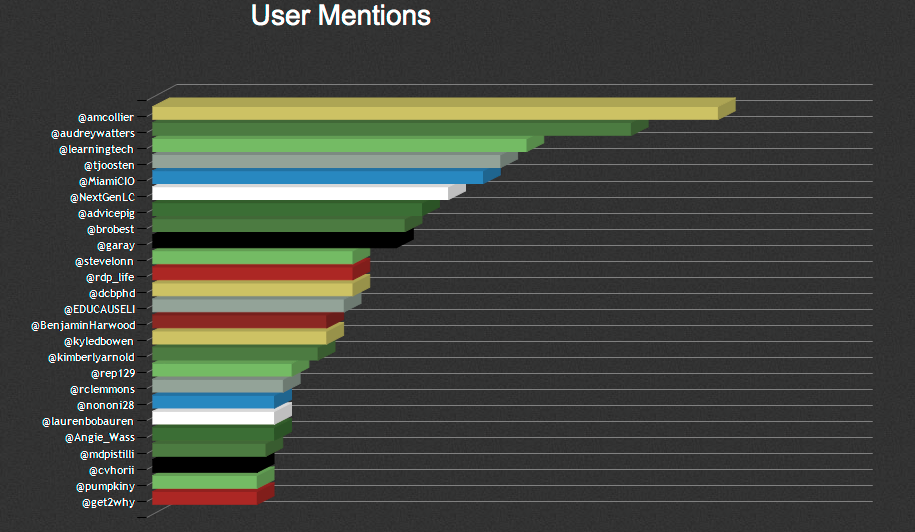
THANK YOU TO THE PEOPLE SHARING
To conclude, just a note on the people sharing the conference online. While MOOC’s was a theme, the Maker movement popular, and the experiment with the badges novel, at the end of the day it is about personal connections. The above list of folks, and everyone else sharing and conversing online, made this post possible. If you are looking for a great group of open, sharing individuals to connect with, I suggest starting with the folks listed above.
It is clear to me that ELI 2013 serves as a valuable venue for ideas and connections in teaching and learning, and even adds to the conversation by enhancing the in person experience (badges, webcasts, etc.) Thanks to all of you who presented and shared, and to ELI 2013 for creating the opportunity for them to do that. I am deeply grateful for all of this online content, and I look forward to catching up on the sessions online.
~AC
UPDATE: I took everyone from the top mentions in the graphic above, and I created a twitter list called Online Leaders #ELI2013. If you have a Twitter account, you can subscribe to this list. One stop shopping! I also created a sweet online newspaper using The Tweeted Times for one stop shopping that will take the most mentioned articles from the list above and promote the top ones, daily. Check it out. 🙂
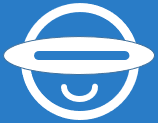
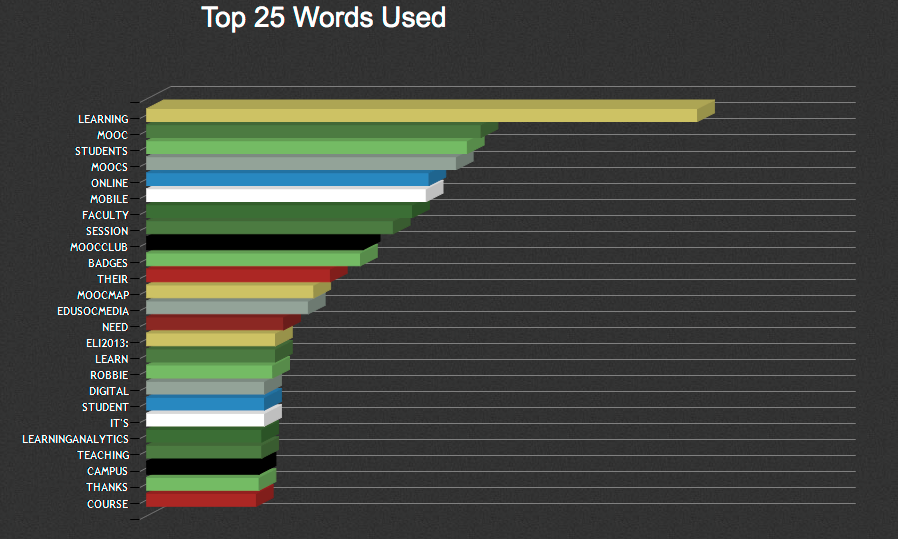


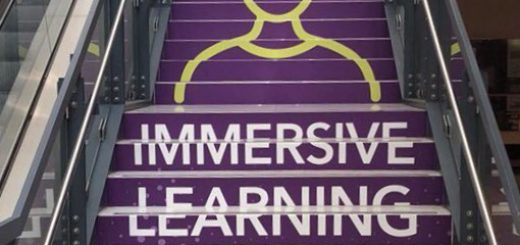
Hi Alex,
Thanks for linking to my post on MOOCs. This is a really nice analysis, one of the best “conference summarization” posts I’ve ever seen. I’m sure I’ll come back to it many times. Keep up the good work!
Best,
Andy